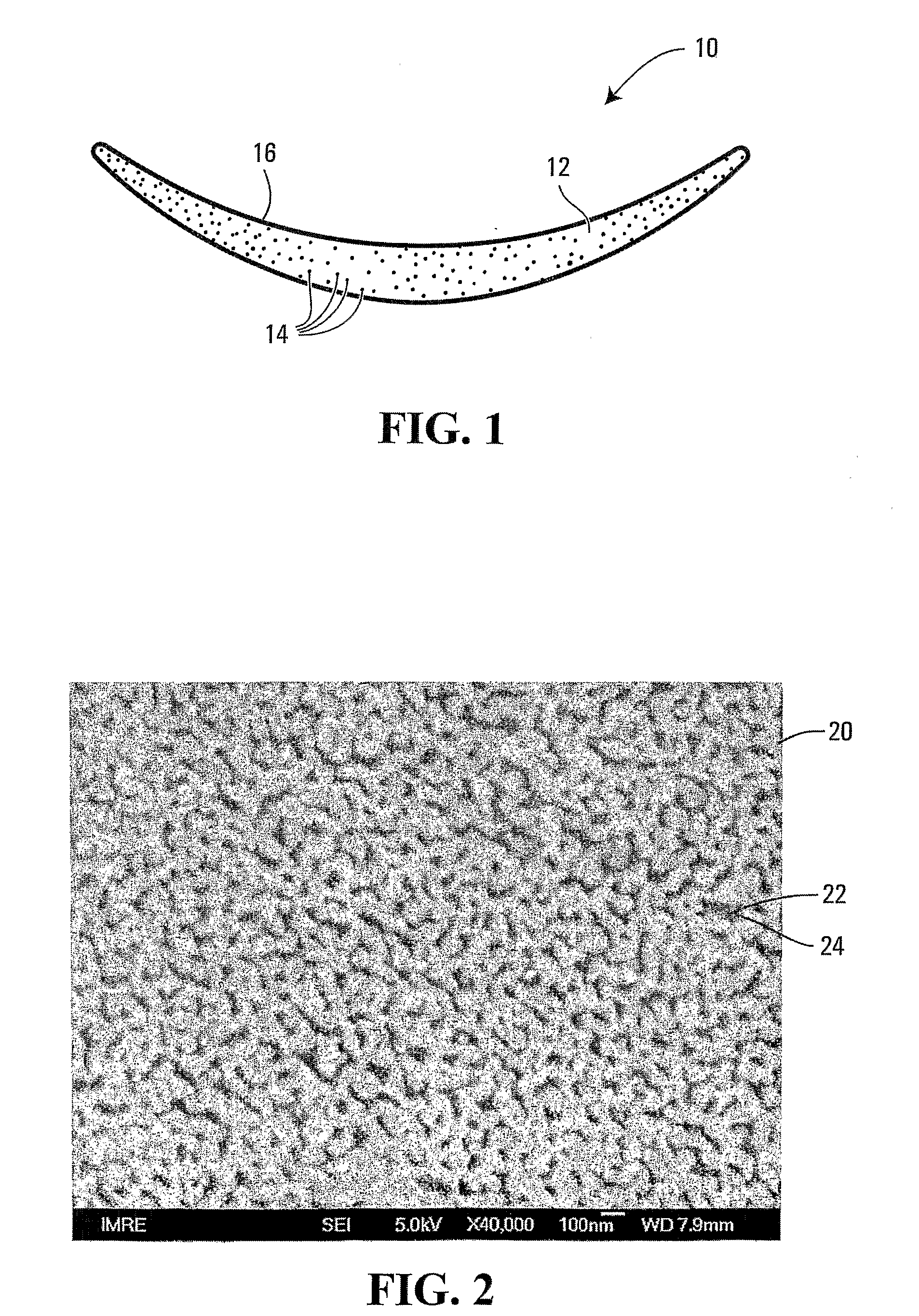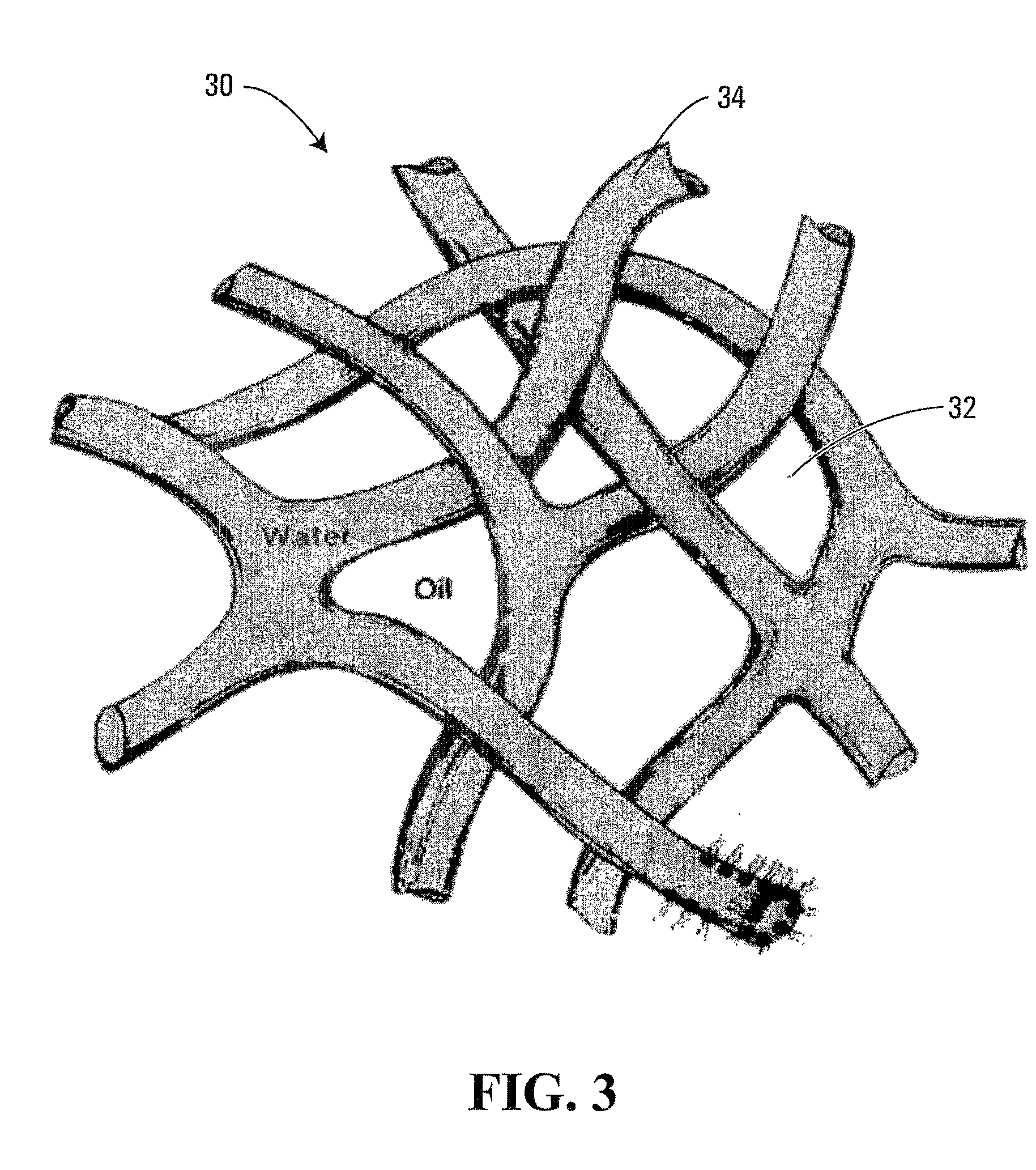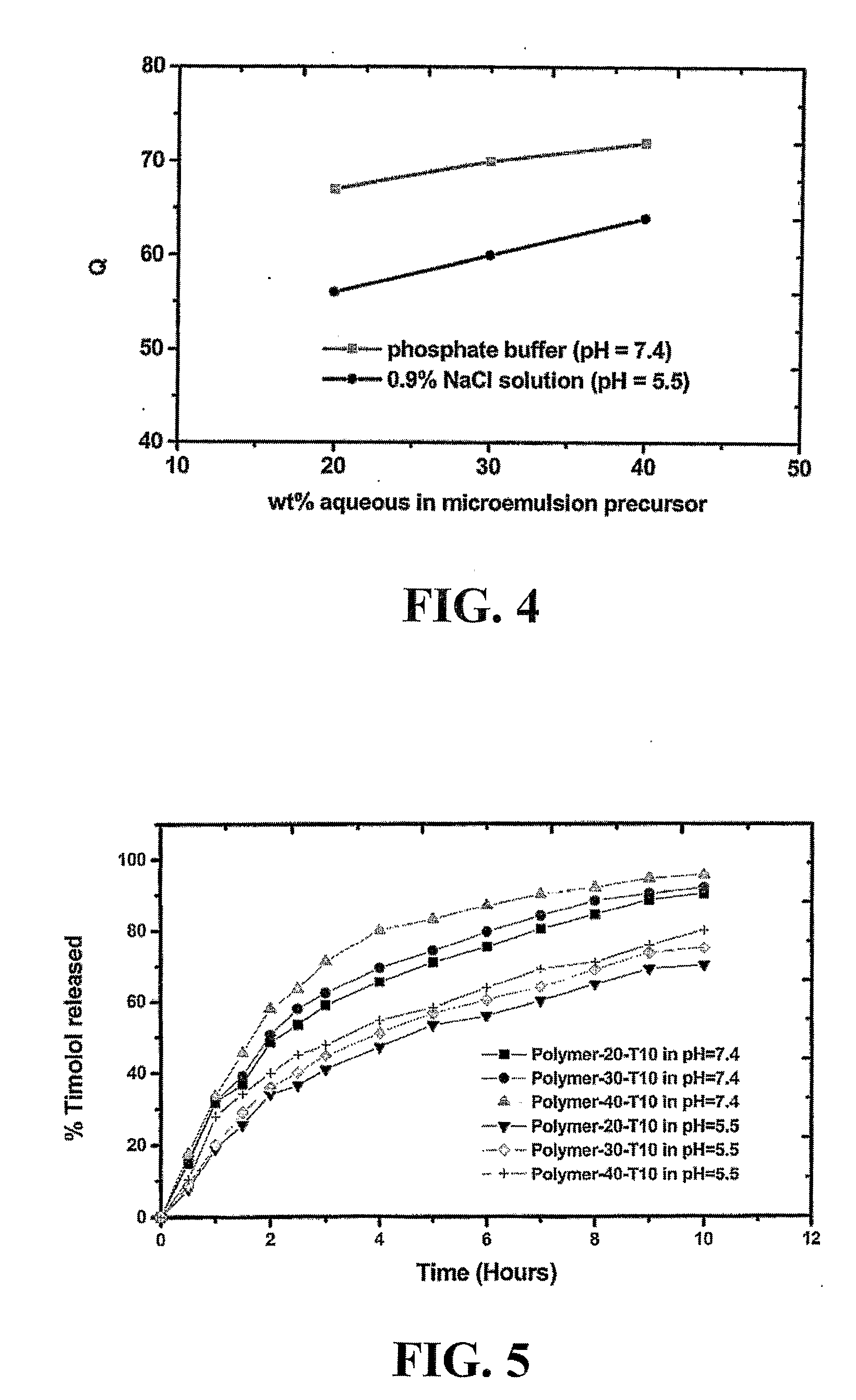Polymer having interconnected pores for drug delivery and method
a polymer and pores technology, applied in the field of drug delivery and polymers for drug delivery, can solve the problems of side effects, about 95% of the medication applied after application, and withdrawals associated with using eye drops to deliver medications
- Summary
- Abstract
- Description
- Claims
- Application Information
AI Technical Summary
Problems solved by technology
Method used
Image
Examples
Embodiment Construction
[0019] Referring to FIG. 1, an exemplary embodiment of the invention is a contact lens 10 made of a transparent and porous polymer 12 having an ophthalmic drug 14 incorporated therein. When the contact lens 10 is put on the eye, a surface 16 of the contact lens 10 is in contact with the post-lens tear film and the ophthalmic drug 14 is released from the contact lens 10 into the post-lens tear film at a desirable rate.
[0020] As used herein, the term “transparent” broadly describes the degree of transparency that is acceptable for a contact lens or like devices, for example the degree of transmission of visible light through the polymer equivalent to that of other materials employed in the manufacture of contact lenses or other ophthalmic devices.
[0021] As illustrated in FIG. 2, which is a Scanning Electron Microscopic image of the internal structure of an exemplary polymer suitable for use as the polymer 12, the polymer has a polymer matrix 20 (shown as the bright portions) definin...
PUM
| Property | Measurement | Unit |
|---|---|---|
| pore diameter | aaaaa | aaaaa |
| pore diameter | aaaaa | aaaaa |
| pore diameter | aaaaa | aaaaa |
Abstract
Description
Claims
Application Information
 Login to View More
Login to View More - R&D
- Intellectual Property
- Life Sciences
- Materials
- Tech Scout
- Unparalleled Data Quality
- Higher Quality Content
- 60% Fewer Hallucinations
Browse by: Latest US Patents, China's latest patents, Technical Efficacy Thesaurus, Application Domain, Technology Topic, Popular Technical Reports.
© 2025 PatSnap. All rights reserved.Legal|Privacy policy|Modern Slavery Act Transparency Statement|Sitemap|About US| Contact US: help@patsnap.com



